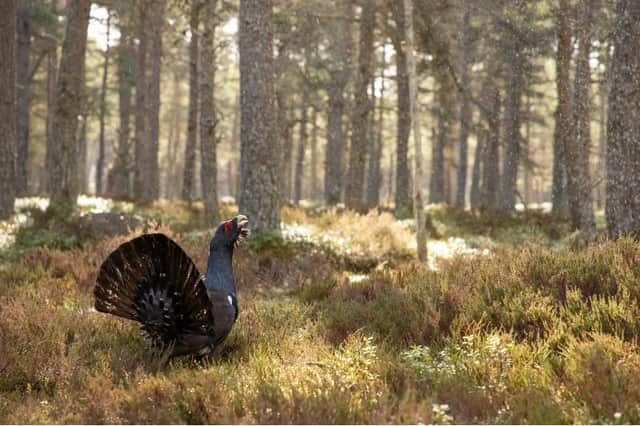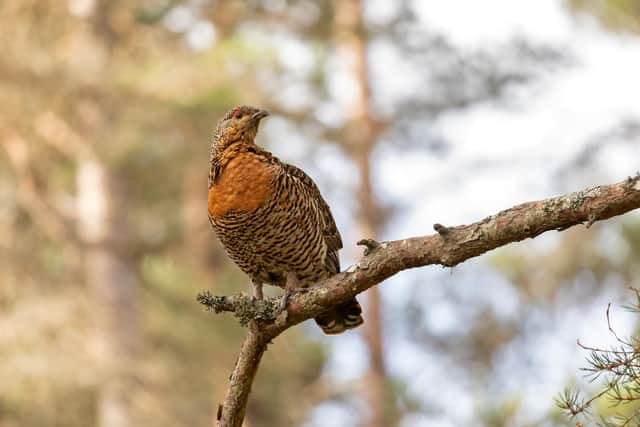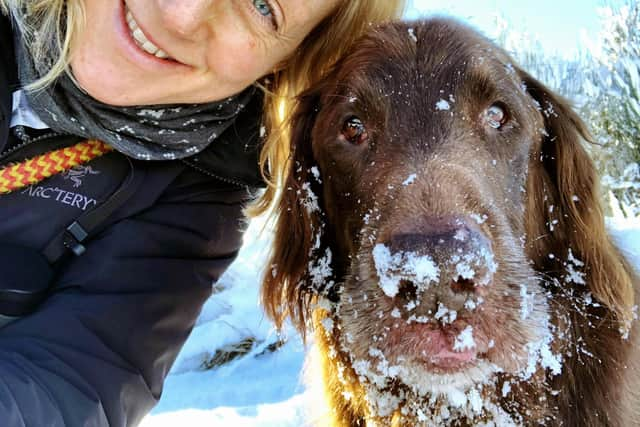New bid to save vanishing capercaillies in the Cairngorms


Eight local people, including a community ranger and a gamekeeper, have been taken on to improve the survival chances of capercaillies, which have been declining dramatically over the past few decades.
The new workers are part of the Cairngorms Capercaillie Project, which is spearheading community-led action including habitat improvement, to save the endangered species.
Advertisement
Hide AdAdvertisement
Hide AdThe Cairngorms National Park is home to nearly 90 per cent of all the capercaillies remaining, with only a few tiny scattered populations found elsewhere in Scotland.


The project will run for the next two years, thanks to funding from the National Lottery Heritage Fund.
Those appointed bring experiences from a variety of different professional backgrounds but are united in a shared commitment to the people, wildlife and businesses in the Cairngorms region.
“Capercaillie are in serious decline and in the midst of such difficult times economically as well, I’m proud that we’ve been able to bring money into the Park and create jobs that will not only benefit the local economy but also the environment and our local wildlife, which has become so important to our health and well-being over the last year,” says Carolyn Robertson, project manager for the initiative.
The capercaillie, which takes its name from the Gaelic for ‘horse of the forest’, is the country’s largest and rarest native grouse species.


Threatened by habitat loss, numerous predators and collisions with deer fences, it is currently facing extinction in Scotland for a second time.
The species was wiped out in the UK in the mid-18th century, with the main cause thought to have been a catastrophic loss of its woodland habitat.
Today’s survivors are all descended from Swedish birds, reintroduced to Perthshire in 1837.
Advertisement
Hide AdAdvertisement
Hide AdThe population reached a high of around 20,000 by the 1970s, but crashed over the following decades to an estimated 1,000 today.
Work to boost numbers includes improving more than 10,000 hectares of capercaillie habitat, expanding forests, removing fences and controlling deer.
Advisory officer Molly Doubleday and assistant Helen Gray will be working on the ground with land managers to drive forward this work, while also monitoring the birds and contributing to scientific research into the genetic diversity of the population.
Gamekeeper David ‘Poppy’ Clark, who is stationed at Seafield Estate in Grantown, said: “Keeping predator and deer numbers low in capercaillie habitat is one really important measure to take if we want to help the species survive.
“Being part of the project team is a great chance to use the skills and knowledge I have to give capercaillie a fighting chance, alongside all the other things we’re doing to help the bird.”
Meanwhile, community ranger Duncan Macdonald will be working with local groups to help deliver actions to benefit the species and improve the national park environment.
The rest of the team are project officer Elspeth Grant, administrator Naomi Kaye and communications officer Jocasta Mann.